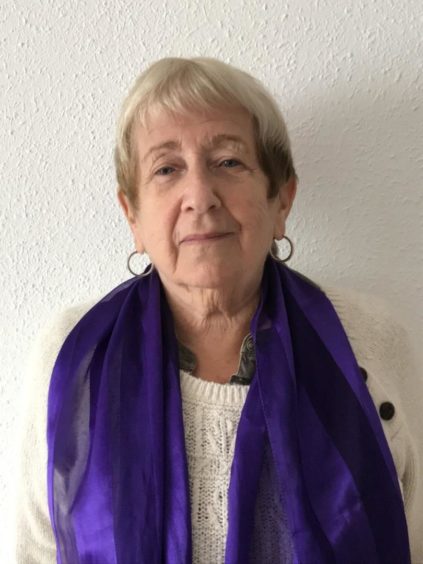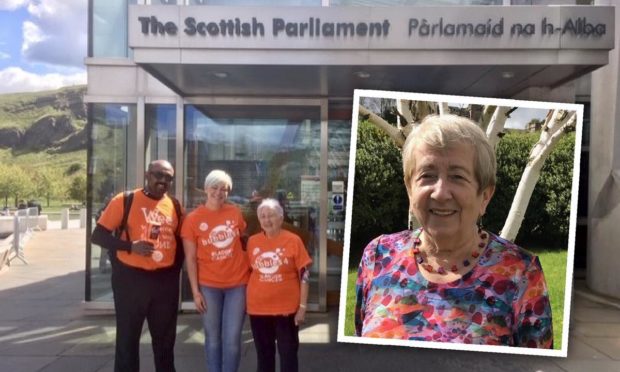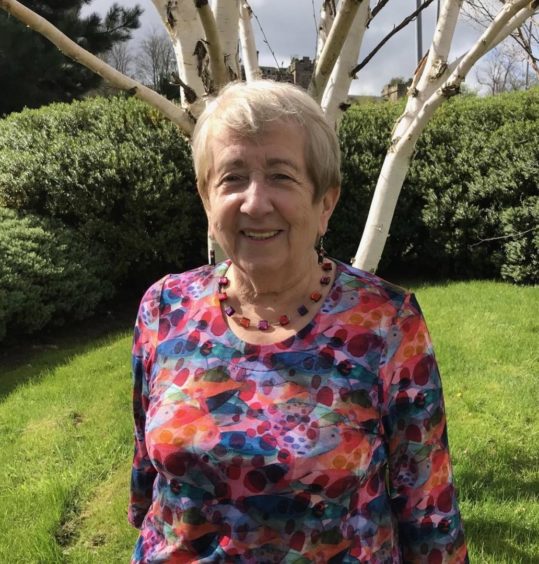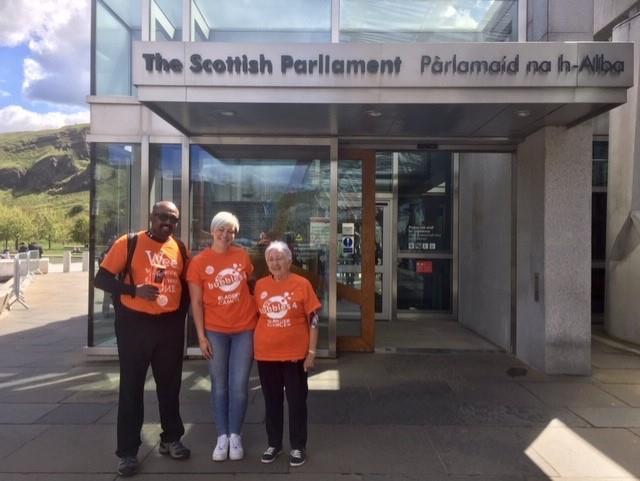Fifer Dorothy Markham was 79 when she finally retired, looking forward to a well-earned rest and spending more time with her family.
But not long after her career in social work came to a close, she began feeling unwell and noticing blood in her urine.
Dorothy, from Falkland, remembers: “I went to see the GP and foolishly told him I thought I had cystitis. My urine was like cranberry juice.”
Four rounds of antibiotics, a specialist consultation and an operation later, Dorothy was diagnosed with muscle invasive bladder cancer.
Dorothy shares her experience following the announcement a new treatment for the disease has been approved for use in Scotland.
She says: “It felt like it was happening to somebody else. It was such a shock.
“I hadn’t even heard of bladder cancer.
“You have to keep your sense of humour. It sees you through, though there are days where it’s missing.
“I do believe everything is planned in some way, but when I was first diagnosed, I used to look in the mirror and think ‘I don’t like this plan’.
“It’s not the plan I wanted. But I’ve been really lucky.”
‘I wanted to give something back’
As part of her treatment, Dorothy had her bladder removed and now uses a stoma bag.
But following her own experience, she’s dedicated to raising awareness of the cancer, so others don’t have to go through what she did.
Dorothy, now 85, continues: “When I went to see my specialist at the Western [General Hospital in Edinburgh], I was looking for information on bladder cancer, but I couldn’t find anything at the clinic.
“I told him I wanted to give something back for what I’d experienced. He told me about an organisation called Fight Bladder Cancer. So, I got in touch with them and that started us off on a campaign of our own.
“Short-term, our aims are to raise awareness, to get a national campaign. Longer-term, we want to set up a charity in Scotland.
“We’ve also set up a Scottish Women’s Support Group. More men are diagnosed with bladder cancer than women, but the prognosis for women is worse because of late diagnosis.
“That’s because we’re used to seeing blood in our urine and having urine infections, so symptoms might be seen as something women live with rather than symptoms of cancer.”
New hope for treatment
A new treatment for bladder cancer is now available on the NHS in Scotland.
Clinical trials of the drug, Avelumab, show a 31% reduction in the risk of death and a “statistically significant” improvement in overall survival.
Symptoms of bladder cancer
The main symptom of bladder cancer is blood in the urine. Other symptoms include:
- Needing to urinate on a more frequent basis
- Sudden urges to urinate
- A burning sensation when passing urine
Dorothy notes: “I hope it gives people a better chance – not just at life but at positive, high quality of life.
“It might not be a cure, but anything that gives people a better quality of life is really important.”
Dorothy urges people who might have symptoms to visit their GP.
She also urges anyone who has received a diagnosis to reach out for support: “We don’t talk about wee: We’re told not to do that from a young age.
“But the more people are aware and the more we can talk about it, the better.”


